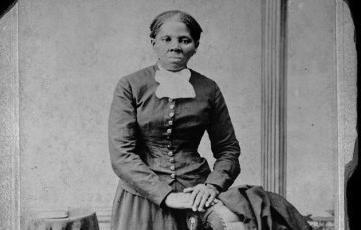Top 7 ways Harriet Tubman is the most Badass Spy & Warrior ever to grace US Currency
Despite US schools’ tendency to give students several years of American history, over and over again, most of us probably have only a foggy idea who Harriet Tubman, chosen to replace Andrew Jackson on the $20 bill, was.
That she was an abolitionist and helped out with the Underground Railroad might lurk in the back of the mind. But she didn’t just help out. She led what were essentially armed guerrilla raids into enemy territory. That role prepared her to be one of the great spies in American intelligence history, during the Civil War, serving President Lincoln.
That’s right. She was Jane Bond in the mid-19th century.
Not content to provide intelligence, she actually led a company-sized military unit of 150 men (making her the equivalent of a captain or major) in a riverine naval raid that freed hundreds of slaves and destroyed the estates of several major wealthy secessionists.

US History writes:
“Perhaps the most outstanding “conductor” of the Underground Railroad was Harriet Tubman. Born a slave herself, she began working on the railroad to free her family members. During the 1850s, Tubman made 19 separate trips into slave territory. She was terribly serious about her mission. Any slave who had second thoughts she threatened to shoot with the pistol she carried on her hip.”
Here, then, are seven ways Tubman was a badass:
1. She led 19 dangerous expeditions into the South to bring slaves up north and to freedom.
2. She wore a pistol on her hip during these expeditions.
3. She threatened to shoot any slaves who got cold feet once the rescue was initiated. She freed some 70 slaves from Maryland and helped 50 or 60 more got to Canada.
4. In 1862-3 she carried out dangerous espionage missions in South Carolina for the Union army, working with General David Hunter.
5. She then led the Combahee River raid on South Carolina; Blackpast.org explains:
“On the night of June 2nd three federal gunboats set sail from Beaufort, South Carolina up the Combahee River. Tubman had gained vital information about the location of Rebel torpedoes planted along the river from slaves who were willing to trade information for freedom. Because of this information Tubman was able to steer the Union ships away from any danger. She led the ships to specific spots along the shore where fugitive slaves were hiding and waiting to be rescued . . . eventually 750 boarded the vessels. The boats however had a specific military mission. They carried Union troops who came on shore and succeeded in destroying several influential South Carolina estates owned by leading secessionists, including the plantations of the Heywards, the Middletons, and the Lowndes families. Many of the Union soldiers who took part in the raid were former slaves who saw the burning and pillaging of these estates as an opportunity to enact revenge on the master class.”
6. Blackpast.org concludes: “Harriett Tubman was the only woman known to have led a military operation during the American Civil War.”
7. After the war, Tubman supported women’s rights and the granting of the vote to women. The Harriet Tubman Historical Society explains:
“Many supporters of Harriet Tubman during her Underground Railroad years who let her use her properties to harbor fugitives and funded her trips, were involved in the women’s rights movement. After the Civil War Susan B. Anthony, Elizabeth Cady Canton and Lucretia Mott had become strong advocates and leaders of the women’s rights movement. Tubman believed in the equality of all people, black or white, male or female, which made her sympathetic to the women’s rights movement. Tubman’s role was not that of a leader but that of a strong supporter. As a woman who had fought for her own freedom and the freedom of others, Tubman set to work with her friends by touring and giving speeches about her own experiences as a female slave and as the liberator of hundreds born under the bondage of slavery.”
” In 1911, two years before she died, she attended a meeting of the suffrage club in Geneva, New York, where a white woman asked her: “Do you really believe that women should vote?” Tubman reportedly replied, “I suffered enough to believe it.”
Tubman died in 1913. Women got the vote in 1920.